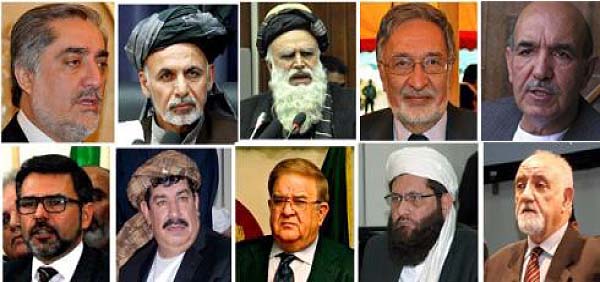KABUL - In a recent joint poll conducted by ATR and TOLOnews, residents from across Afghanistan's 34 provinces answered questions regarding their preferred Presidential candidates.
Results from this opinion poll show that Afghan participation in the elections process has increased since the last poll conducted two months ago.
With 104 days remaining until Afghanistan's 2014 Presidential Elections, polling results show that people's interest in regards to the presidential candidates have increased. In the previous opinion poll, half of the respondents stated they did not know which candidate they prefer; the most recent results show that this number has decreased to 36 percent.
Leading the poll is Dr. Abdullah Abdullah, with 27 percent of respondents identifying him as the best candidate, of which the majority is female. In second and third place respectively are Dr. Ashraf Ghani Ahmadzai with 19 percent and Qayoum Karzai with four percent.
Compared to previous polling data, there are overall percentage gains for both Dr. Abdullah Abdullah and Dr. Ashraf Ghani, from 21 percent and 13.6 percent respectively.
At the bottom of the list of preferred candidates are Daud Sultanzoy with 0.4 percent and Hedayat Ameen Arsala with 0.1 percent.
Furthermore, 28 percent of the respondents stated they did not know which of the 11 candidates they thought was best, while only 7 percent said that there is no better candidate among the candidates.
Below is a breakdown of the results by region:
Kabul
· Dr. Abdullah Abdullah – 27%
· Dr. Ashraf Ghani - 22%
· Qayoum Karzai - 4%.
Central
· Dr. Abdullah Abdullah - 26%
· Dr. Ashraf Ghani – 16%
· Abdul Rab Rasool Sayaf - 5%.
North
· Dr. Abdullah Abdullah - 33%
· Dr. Ashraf Ghani – 23%
· Zalmai Rasool – 3%.
West
· Dr. Abdullah Abdullah - 38%
· Dr. Ashraf Ghani – 14%
· Abdul Rab Rasool Sayaf – 9%
South
· Dr. Abdullah Abdullah – 17.1%,
· Dr. Ashraf Ghani - 12%
· Qayoum Karzai – 11%
East
· Dr. Ashraf Ghani - 31%
· Dr. Abdullah Abdullah – 14%,
· Rahim Wardak – 7%
Methodology:
ATR consulting and TOLONews randomly called 2,063 people across Afghanistan and asked the following question to each respondent: "Who do you think is the best candidate, among all candidates for the presidency?" People could either select one of the 11 candidates who remain in contention or respond 'I do not know' or 'Nobody is a good candidate'.
The survey took place from the 11th to the 21st of December 2013.
ATR utilized an algorithm to generate more than 20 million phone numbers at random. Surveyors then worked through the list to determine which numbers were attributed, interviewing those respondents who were willing to give their feedback.
In order to ensure the highest possible degree of access to female respondents, all surveyors were women.
Techniques to increase access to female respondents were also used such as asking a male respondent on completion of an interview if there were any women in the vicinity who would also be willing to respond to the survey. In this way the survey is representative not only of individuals with phones, but also of those households where only one phone may be present.
The delivery of questions was such as to be as impartial as possible, and negate any opportunities for surveyors to lead the respondent or otherwise have a bearing on results. All respondents were read the list of candidates in alphabetical order.
In addition, all surveys were recorded and two separate monitors (one Afghan one international) each listened to approximately 20 percent of all surveys, selected at random to ensure none of the surveyors were influencing the result and data was of an acceptable quality.
The confidence level of the survey is 95 percent.
In order to ensure that the overall sample was fully representative of the Afghan population results were weighted. Firstly, the results were weighted within each province to ensure equal representation of male, female, urban and rural respondents. Nationwide, results were then reached by weighting results by province according to the national population distribution. (Tolo News)

